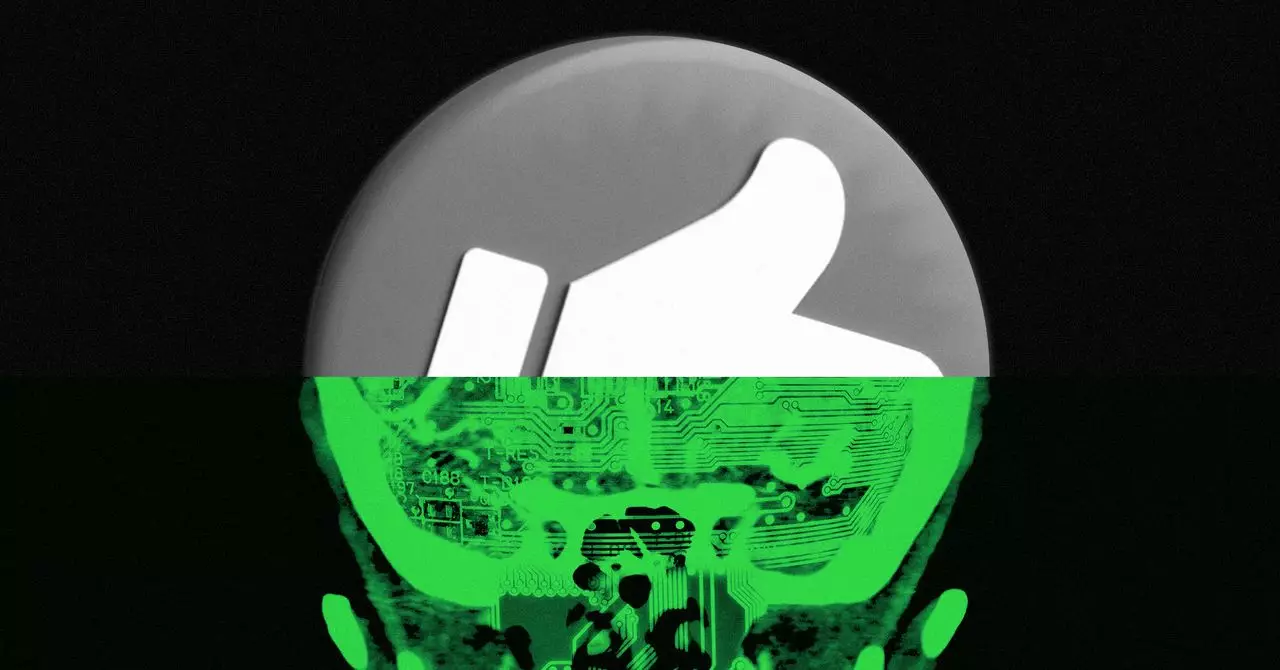In today’s digital landscape, the role of the like button has transcended mere feedback; it has evolved into a vital component in the training of artificial intelligence systems. Max Levchin, co-founder of PayPal and CEO of Affirm, envisions this simple interaction as the foundation for teaching AI to align more closely with human decision-making. At its core, machine learning often struggles with a significant dichotomy: while algorithms can efficiently optimize performance based on reward systems, these outcomes can deviate drastically from what humans might choose. To address this challenge, developers employ methods known as Reinforcement Learning from Human Feedback (RLHF), integrating human preferences into the learning process. However, the root of this valuable human feedback remains under scrutiny: where does it originate, and how can it be harnessed without incurring excessive costs?
The true challenge lies in sourcing authentic human preference data, which often requires substantial investment in human annotators. This is where Levchin sees an opportunity; he believes that the ‘mountain of liking data’ owned by platforms like Facebook could serve as an invaluable resource for developers. This perspective elevates the like button beyond being a passive feature; it becomes a potent tool for gathering data that encapsulates human preferences, essential for training AI systems effectively.
AI’s Evolving Influence on User Interaction
However, the calculus of the like button is not one-sided. Awash in the tide of AI, social media platforms are increasingly using algorithms not just to analyze and interpret likes, but also to forecast user preferences in real time. This shift signals a potential future where the like button may become obsolete—a fascinating prospect. While Levchin positions the like button as a data-rich asset, it is crucial to acknowledge that AI is actively shaping and redefining the preferences that the button seeks to quantify.
Recent experiments, such as Facebook’s attempt to enhance its Reels video recommendation algorithms, highlight how AI powers these developments. By optimizing for variables that predict user preferences more accurately, AI can lead to extended engagement, evidenced by increased watch times. This raises an interesting question: will a sophisticated enough AI eventually eliminate the need for explicit user feedback mechanisms like the like button altogether? As Steve Chen, co-founder of YouTube, posits, an advanced algorithm may someday predict viewing preferences with near-perfect accuracy, negating the button’s necessity.
The Likelihood of Longevity for the Like Button
Yet, despite the allure of a completely automated prediction model, the like button may retain its relevance for reasons that extend beyond mere functionality. Chen highlights the button’s potential to accommodate short-term changes in user preferences. Life events often dictate shifts in content consumption; a parent may gravitate towards family-oriented content during specific times, a need that a predictive algorithm may not readily accommodate. Thus, the like button functions as an ad hoc solution, empowering users to signal their immediate needs more accurately.
Moreover, the like button plays a pivotal role in the intricate ecosystem of social media interaction, connecting viewers, advertisers, and content creators in a seamless loop of engagement. It serves as a critical tool for advertisers, allowing them to gauge viewer interaction with content. One click offers insight into audience engagement while simultaneously delivering feedback to content creators, effectively becoming a currency of appreciation and attention in the vast social media marketplace.
The Strategic Role of AI in Social Media Landscape
Looking ahead, it is clear that the like button’s fate will be influenced by the ongoing evolution of AI capabilities. As algorithms become adept at understanding nuances in human behavior, the role of the like button will undoubtedly transform, adapting to the very needs it was originally designed to fulfill. However, this future is not merely about replacing one mechanism with another; it involves a more comprehensive understanding of user behavior, preferences, and the subtleties that define human interaction.
Embracing the complexities of human emotion and taste in digital consumption will require an intelligent approach that values the user’s voice and preferences, even in an age of growing automation. As developers aim to craft smarter AI systems, the like button’s data could play an instrumental role in this endeavor, bridging the gap between human intuition and machine learning. In this dynamic landscape, the challenge will be to harness the like button’s potential without losing sight of the human experience that ultimately drives digital engagement.
In essence, the future of the like button in an AI-driven world is not a foregone conclusion. Instead, it presents a fascinating interplay between technology and human behavior, challenging us to rethink how we engage with content and the very metrics we use to measure our experiences online.

